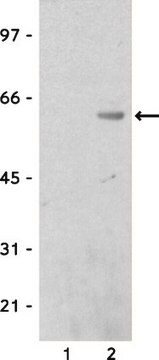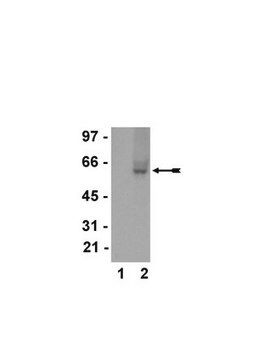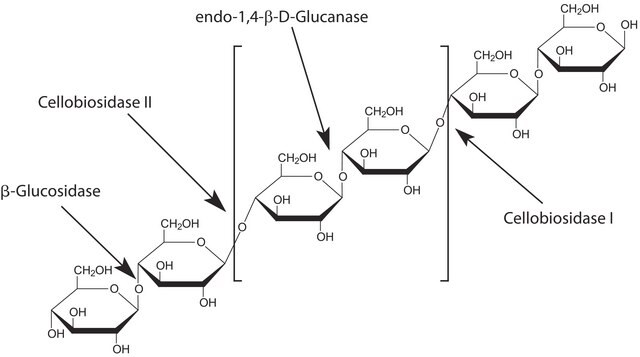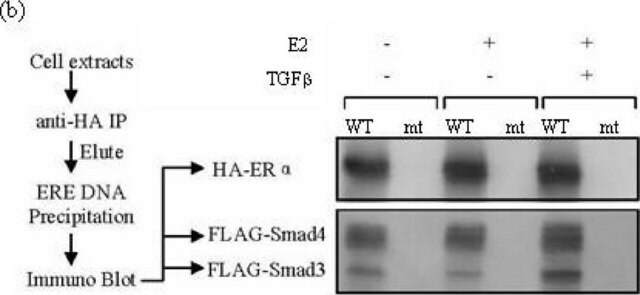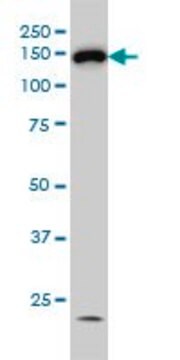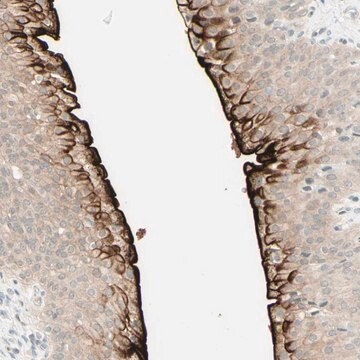04-932
Przeciwciało anty-Calmodulin Binding Protein Epitope Tag, klon C16T, królicze monoklonalne
culture supernatant, clone C16T, from rabbit
Synonim(y):
kalmodulina 1, kalmodulina 1 (kinaza fosforylazy, delta), kinaza fosforylazy, podjednostka delta
About This Item
Polecane produkty
pochodzenie biologiczne
rabbit
Poziom jakości
forma przeciwciała
culture supernatant
rodzaj przeciwciała
primary antibodies
klon
C16T, monoclonal
reaktywność gatunkowa
vertebrates
metody
western blot: suitable
izotyp
IgG
numer dostępu UniProt
Warunki transportu
dry ice
docelowa modyfikacja potranslacyjna
unmodified
informacje o genach
human ... CALM1(801)
Opis ogólny
Specyficzność
Immunogen
Zastosowanie
Znaczniki epitopowe i ogólne zastosowanie
Znaczniki epitopowe
Jakość
Western Blot Analysis: 1:2,000 dilution of this antibody detected a recombinant protein containing the calmodulin binding protein epitope tag in lysates from transformed E. coli.
Opis wartości docelowych
Powiązanie
Postać fizyczna
Przechowywanie i stabilność
Zalecenia dotyczące postępowania: Po otrzymaniu, a przed zdjęciem korka, odwirować fiolkę i delikatnie wymieszać roztwór. Rozdzielić do probówek mikrowirówkowych i przechowywać w temperaturze -20°C. Unikać powtarzających się cykli zamrażania/rozmrażania, które mogą uszkodzić IgG i wpłynąć na działanie produktu.
Komentarz do analizy
Próbki zawierające znacznik epitopowy białka wiążącego kalmodulinę.
Oświadczenie o zrzeczeniu się odpowiedzialności
Nie możesz znaleźć właściwego produktu?
Wypróbuj nasz Narzędzie selektora produktów.
Kod klasy składowania
12 - Non Combustible Liquids
Klasa zagrożenia wodnego (WGK)
WGK 1
Temperatura zapłonu (°F)
Not applicable
Temperatura zapłonu (°C)
Not applicable
Certyfikaty analizy (CoA)
Poszukaj Certyfikaty analizy (CoA), wpisując numer partii/serii produktów. Numery serii i partii można znaleźć na etykiecie produktu po słowach „seria” lub „partia”.
Masz już ten produkt?
Dokumenty związane z niedawno zakupionymi produktami zostały zamieszczone w Bibliotece dokumentów.
Nasz zespół naukowców ma doświadczenie we wszystkich obszarach badań, w tym w naukach przyrodniczych, materiałoznawstwie, syntezie chemicznej, chromatografii, analityce i wielu innych dziedzinach.
Skontaktuj się z zespołem ds. pomocy technicznej